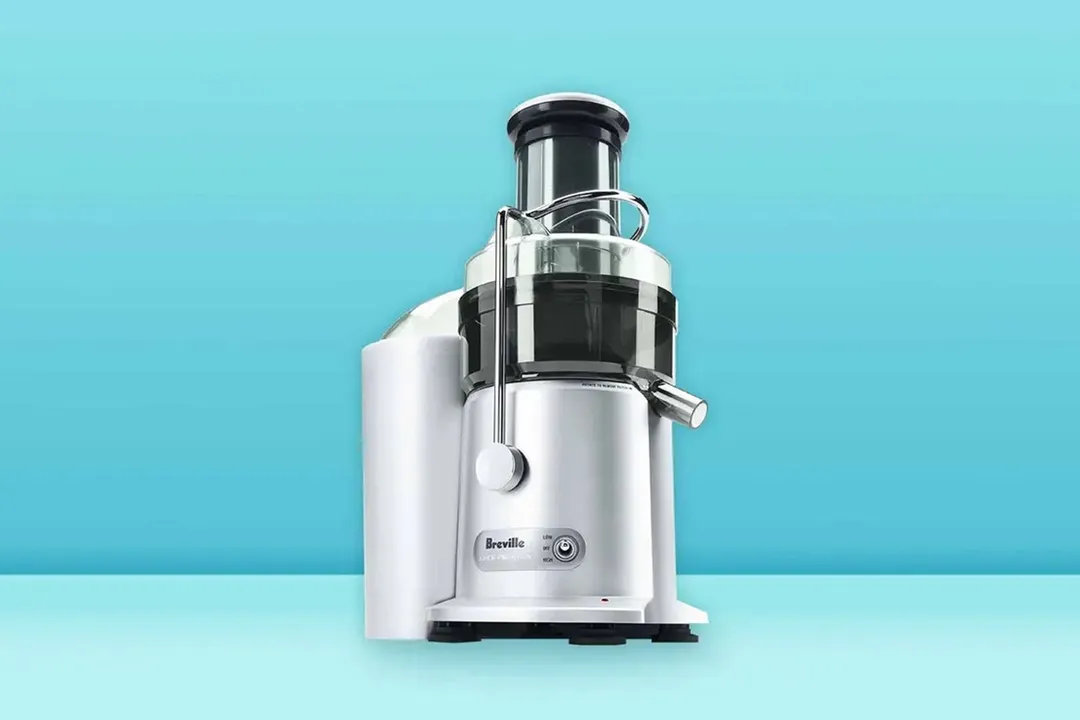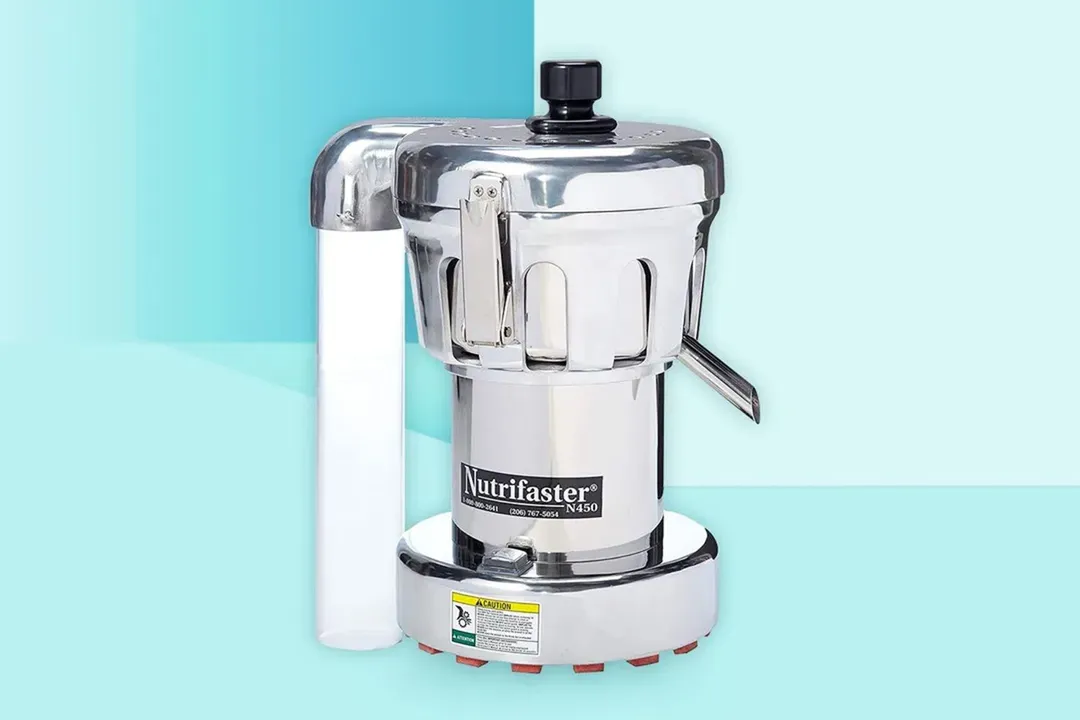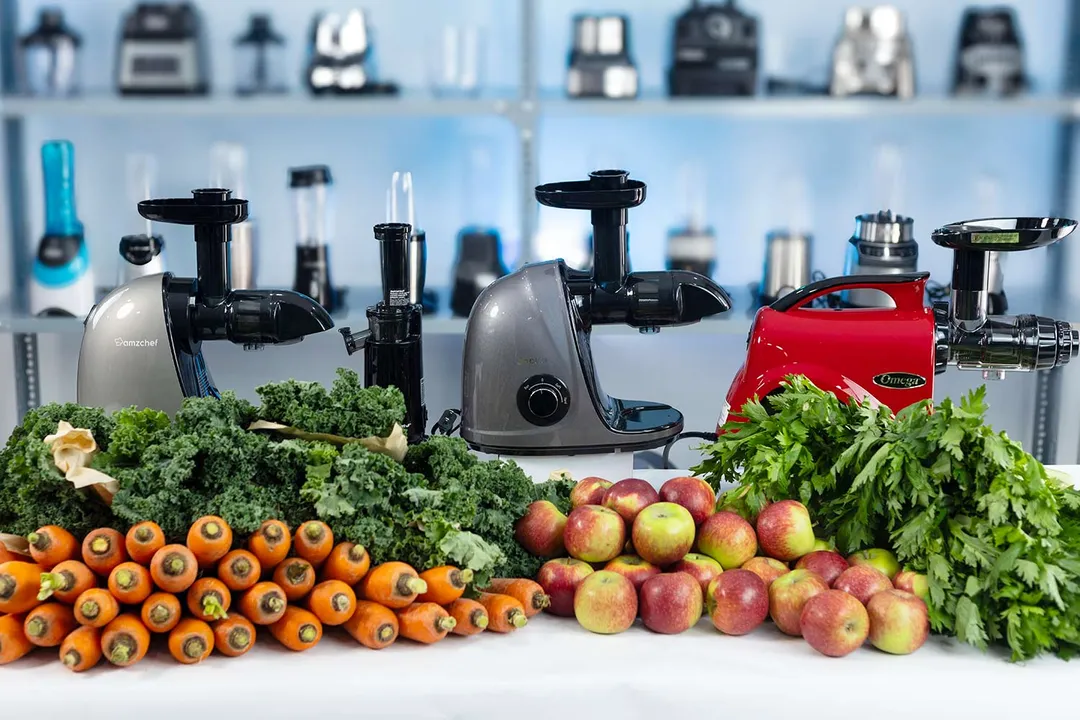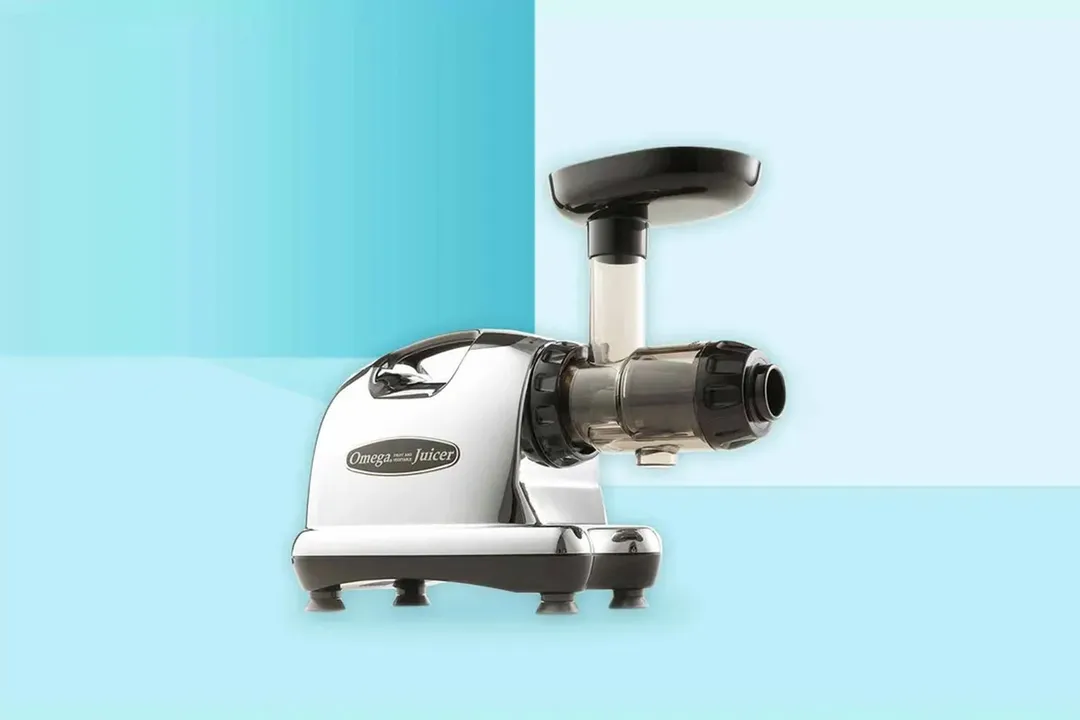Our recommendations are made independently through Research & Testing. We may receive commissions from purchases made via our links.
The Benefits and Downsides of Juicing, Scientifically and Practically Explained
The health benefits of juicing and downsides to it, with science-based, nutritionist fact-checked information. Read before you buy a juicer.
So you’re contemplating adding fresh juice into your health regimen, but are wondering if juicing is really worthwhile. Should you buy a juicer? Will you lose 25 pounds by incorporating home-made celery juice into your diet, or will the $500 juicer end up sitting in a cupboard collecting dust?
This article aims to shed light on the benefits and drawbacks of juicing— the good, the bad, and the ugly of it.
The article is for informational purposes. We do not provide medical advice. Please consult with your physician before making juice a significant part of your diet.
The Benefits of Juicing – Why it’s More Than a Fad
While it may often be referred to as another health fad, juicing does bring with it certain benefits.
The Health Benefits of Juicing
Fruits and vegetables are rich in nutrients: they’re great sources of vitamins, minerals, and antioxidants that the body needs to function properly.
The juice extracted from fresh fruits and vegetables contains most of these nutrients, with the exception of the fiber and the antioxidants attached to fiber.
Small-scale studies have suggested there are health benefits to drinking fresh juices.
Fruit and vegetable juices may help delay the onset of Alzheimer’s disease, especially among those at higher risk of the disease, a study found.
In a small-scale experiment on healthy adult participants, the exclusive consumption of vegetable juice for three days seemed to alter the gut bacteria associated with weight loss. The participants’ body weight and body mass index decreased, while their general well-being increased.
Pomegranate juice, known to be a heart-healthy juice, has been linked to the decrease of disease-contributing factors in patients with carotid artery stenosis (narrowing neck arteries). It has also shown promising effects on patients with prostate cancer, prolonging PSA doubling time, thus potentially improving disease outcomes. Pomegranate juice also improved insulin resistance among patients with type-2 diabetes.
Apple juice, meanwhile, appeared to contribute to reduced risk of the type of heart disease known as coronary artery disease.
Most of these studies come with the caveat that they are relatively small-scale, and can’t yet be considered definitive. You’ll also notice the scientific studies don’t tout the juice as a miracle cure the way some websites and vendors do. It’s healthy stuff, but not a panacea.
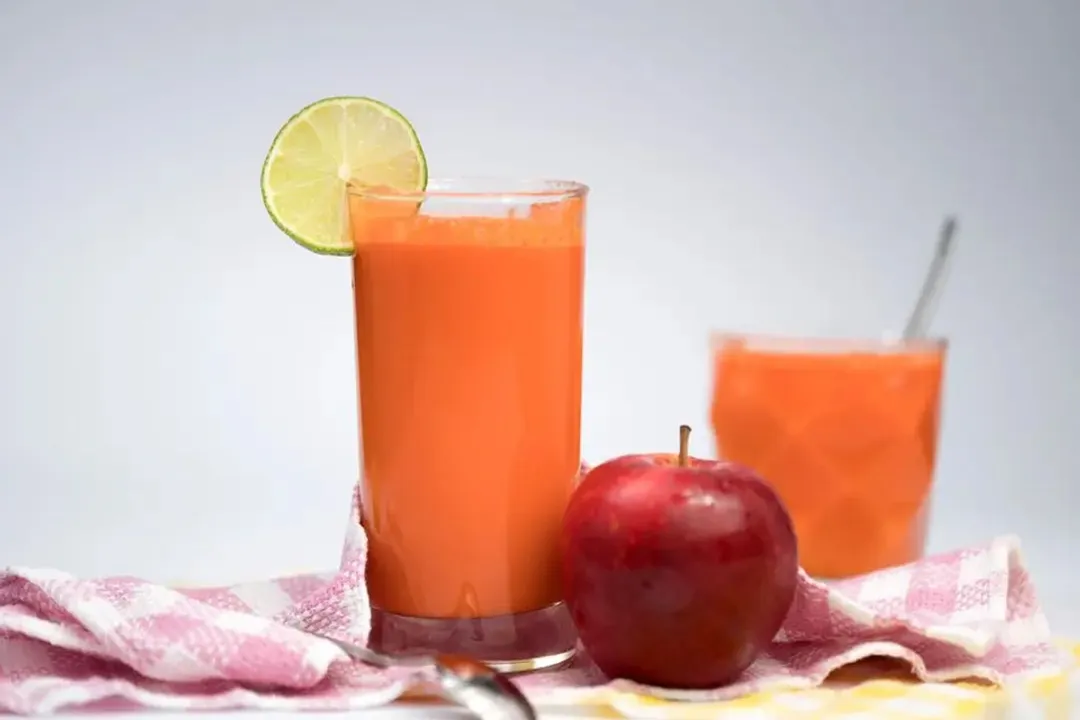
Easy Intake of One of Your Five Daily Portions of Vegetables
150 ml of juice counts as one of your five recommended servings.
Fresh juice can be preferable for those with dental problems or those who simply dread chewing fruits and vegetables. If munching on stalks of celery isn’t your idea of fun, drinking their juice makes it easier for you to still get some of the nutrients.
Juice also comes in handy when your morning routine doesn’t allow time to enjoy platefuls of salad. You can make juice in bulk and keep it chilled as a quick, healthy drink for the days when your schedule is packed. Most juices can be kept in the fridge for two or three days.
Because juice is liquid, it gets absorbed much faster by the body than whole produce. This makes it a convenient pre- and post-workout drink. It can give your body the hydration and nutrients it needs to boost your performance without putting strain on your digestive system.
Note that all the juice you drink can only ever count as one portion. You still need to actually get the other four from whole produce.
Effortless Introduction of Variety
Fruits and vegetables of a particular color contain nutrients that are unique to them. To make sure you get sufficient amounts of all plant-based nutrients, it is recommended that you “eat a rainbow”— a wide variety of fruits and vegetables with different colors— every day.
This is not always viable, as certain fruits and vegetables have strong smells and flavors that turn some people off. This is where juicing can help.
For some, juice tastes differently (and better) than the whole produce. The fragrance and flavor also change when mixed with other ingredients. Some people who would not eat the produce in their whole forms nevertheless enjoy exotic concoctions made by mixing different juices together (sometimes with ice, milk, seeds, and other ingredients).
In this way, juicing allows easy incorporation of different types of fruits and vegetables into your diet.
Downsides to Juicing
Just like any other “healthy” activity, juicing can bring harm if you’re not doing it correctly.
If you have safe, organic, non-GMO produce and a quality, UL-listed, BPA-free juicer, what can really go wrong? What are the risks, and how do you avoid them?
The Health Risks of Drinking Juice
1. Digestion Problems Due to Lack of Fiber
By definition, juicing a piece of produce removes the fibrous portion from the tastier juice. The goal is to leave you with pure liquid, after all. And though the juice is nutritious, the lack of fiber can have some unfortunate consequences.

Drinking the juices can provide you with nearly as many nutrients as does eating whole fruits and veggies, but you still need fiber to help with digestion of other types of food.
A good way to get the fiber, if you don’t want to eat whole fruits and veggies, is to add some of the pulp back into your juice. You can also make smoothies out of the pulp, or add it to your soups and cooked food.
Another way is to take supplements. However, this should be viewed only as the last resort— whole fruits and veggies should always be your first choice.
2. Increased Blood Sugar Level
Most people naturally prefer fruit juices over veggie juices. However, the sweet fruity flavor comes with a risk factor which you probably know well: sugar. The natural sugars in fruit are touted as healthier than granulated sugar because they come with moderating constituents like fiber. With the fiber removed, that health value is significantly reduced.
Experts at Nutrition.gov state that juices made mostly of fruits are high in carbohydrates (the sugars), and so are associated with weight gain. Also, the fact that there is so little fiber in the juice means your body can absorb those sugars extremely quickly, causing your blood sugar levels to spike.
Leafy greens, meanwhile, contain far less sugar, making them safer to consume. The problem is that not everyone is a big fan of greenish juice that smells of broccoli. Plus, green juices are harder to make because the leaves require specific types of juicers.
If you’re not wild about veggies, a good way to build healthy juicing habits is to only introduce small amounts into your fruit juice at first. Get used to that flavor and then gradually increase the “dose.” Different people have different preferences for the fruit-to-veggie ratio in their juice. One of the more common “recipes,” though, suggests that at least 80 percent of the juice should come from veggies.
In the end, the common health risks of juicing are easily avoidable. It boils down to two principles:
- Always keep the amount of sugar in check by drinking more green juices than fruity ones, and
- Use juices only to supplement your diet instead of basing your diet around them. Consult a medical doctor or dietitian before getting on a juice cleanse or fast.
The Inconveniences
1. Increased Grocery Costs
Juicing can be quite expensive even if you ignore the upfront cost of the juicer itself. The main reason is that it takes quite a lot of produce to make a glass of juice. You wouldn’t normally eat three apples in one go, but you can consume them in fiber-free liquid form in 30 seconds!
Depending on where you live and the materials you use for juicing, your grocery bills will most likely rise by $15 – $60 per week (or higher if you’re a fan of organic produce).
If you drink juice regularly, though, making your own juice is still a lot cheaper than buying from juice bars. You can also cut costs by shopping at the local market, buying things in bulk, and using produce that is in season.
2. Prep Work
Juicing always involves some preparation, be it washing the produce, peeling, de-seeding, or cutting the fruits or veggies.

Most centrifugal juicers have large feeding chutes and can handle whole produce. Masticating juicers or twin gear machines, meanwhile, typically have very narrow chutes— you will have to cut everything into small pieces before feeding it to the juicer.
A good way to minimize preparation time is to spend time doing all the work once or twice a week. Precut all of the carrots, celery, and other “bulky” materials for three or four days’ worth of use. That way, you will have at least one less thing to worry about every time you want a glass.
Cleanup
Cleanup involves cleaning the countertop and disassembling the machine to wash it. To prevent pulp from drying up and hardening on the juicer’s surfaces, you will have to do the cleanup as soon as possible. It’s manual work most of the time, as not every part of a juicer is dishwasher friendly.
Depending on the type of juicer and the produce you use, cleanup typically takes about 5 to 15 minutes.
Should You Get a Juicer?
Before splurging on a juicer, consult with your physician or a dietitian to see if it’s a good idea and to learn what’s safe to include in your juicing regimen.
If all you want is a cup of juice or two a week, going to a juice bar would be a much better option. At low volumes it’ll be cheaper, and will save you time and effort.
Getting a juicer is only worthwhile if you want to have fresh juice as a regular part of your diet and can really commit to it.
References
1. Dai et al (2006). Fruit and Vegetable Juices and Alzheimer’s Disease: The Kame Project. The American Journal of Medicine, 119(9), 751–759. https://doi.org/10.1016/j.amjmed.2006.03.045
2. Henning et al (2017). Health benefit of vegetable/fruit juice-based diet: Role of microbiome. Scientific Reports, 7(1). https://doi.org/10.1038/s41598-017-02200-6
3. Basu, A., & Penugonda, K. (2009). Pomegranate juice: a heart-healthy fruit juice. Nutrition Reviews, 67(1), 49–56. https://doi.org/10.1111/j.1753-4887.2008.00133.x
4. Aviram, et al (2004). Pomegranate juice consumption for 3 years by patients with carotid artery stenosis reduces common carotid intima-media thickness, blood pressure and LDL oxidation. Clinical Nutrition, 23(3), 423–433. https://doi.org/10.1016/j.clnu.2003.10.002
5. Motzer et al (2006). Phase II Study of Pomegranate Juice for Men with Rising Prostate-Specific Antigen following Surgery or Radiation for Prostate Cancer. Clinical Cancer Research, 12(13), 4018–4026. https://doi.org/10.1158/1078-0432.ccr-05-2290
6. Banihani et al (2014). Fresh pomegranate juice ameliorates insulin resistance, enhances β-cell function, and decreases fasting serum glucose in type 2 diabetic patients. Nutrition Research, 34(10), 862–867. https://doi.org/10.1016/j.nutres.2014.08.003
7. Hyson et al (2000). Apple Juice Consumption Reduces Plasma Low-Density Lipoprotein Oxidation in Healthy Men and Women. Journal of Medicinal Food, 3(4), 159–166. https://doi.org/10.1089/jmf.2000.3.159
8. Website, N. (2022, July 26). 5 A Day. nhs.uk. https://www.nhs.uk/live-well/eat-well/5-a-day/
9. Regina, L. (2023, April 7). Best Juicers of 2023 - Ultimate Buying Guide & Reviews. Healthy Kitchen 101. https://healthykitchen101.com/juicers/reviews/best/
10. Regina, L. (2023a, April 3). Best Centrifugal Juicers in 2023 - Buying Guide & Reviews. Healthy Kitchen 101. https://healthykitchen101.com/juicers/reviews/best/centrifugal-juicers/
11. Regina, L. (2023b, April 3). The Best Masticating Juicers of 2023 - Buyer’s Guide & Reviews. Healthy Kitchen 101. https://healthykitchen101.com/juicers/reviews/best/masticating-juicers/
12. Regina, L. (2023c, April 7). 5 Best Twin Gear Juicers in 2023 - Buying Guide & Reviews. Healthy Kitchen 101. https://healthykitchen101.com/juicers/reviews/best/twin-gear-juicers/
13. Regina, L. (2023a, March 28). Types of Juicers: Centrifugal vs Masticating vs Twin-Gear Machines. Healthy Kitchen 101. https://healthykitchen101.com/juicers/tips/types-of-juicers/
About your tip
Lizzie is a Minneapolis-based dietitian and founder of It’s a Veg World After All. She completed her MS in Human Nutrition from Drexel University, and is an expert in culinary nutrition, recipe development, and nutrition communications. Lizzie’s philosophy is centered around making nutrition recommendations, and especially the advice to eat more vegetables, approachable and realistic. She is excited to be working with the team at Healthy Kitchen 101 to ensure that their recipes are both nutritious and delicious.
Luna Regina is an accomplished writer and author who dedicates her career to empowering home cooks and making cooking effortless for everyone. She is the founder of HealthyKitchen101.com and HealthyRecipes101.com, where she works with her team to develop easy, nutritious recipes and help aspiring cooks choose the right kitchen appliances.



